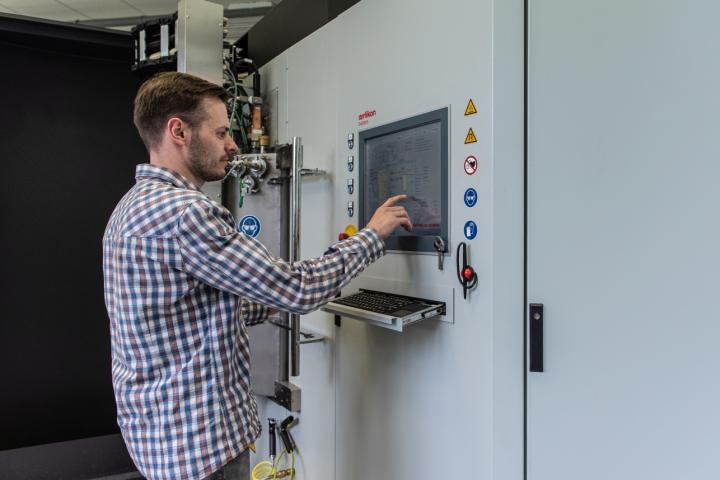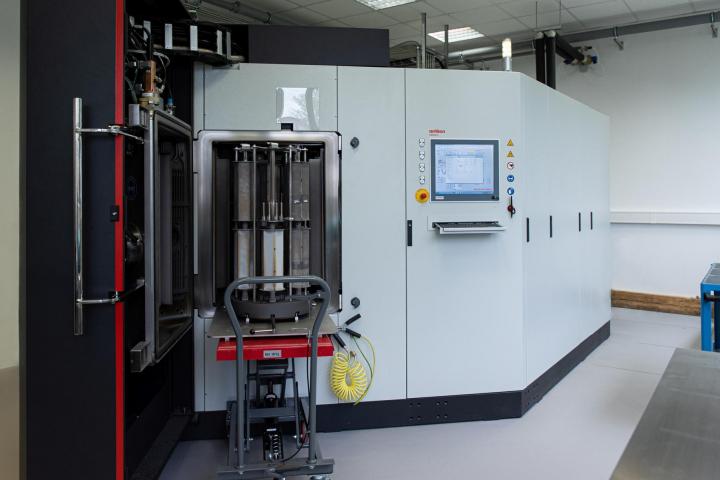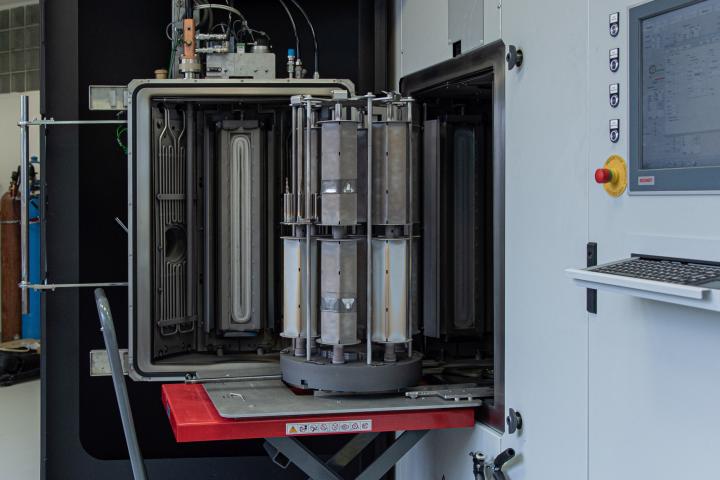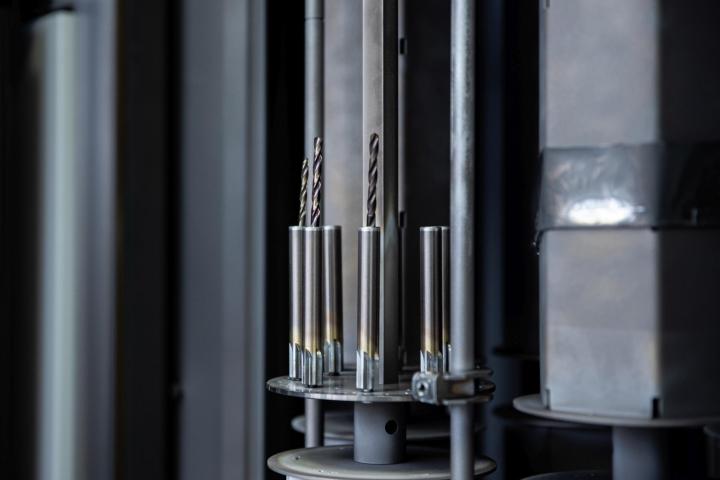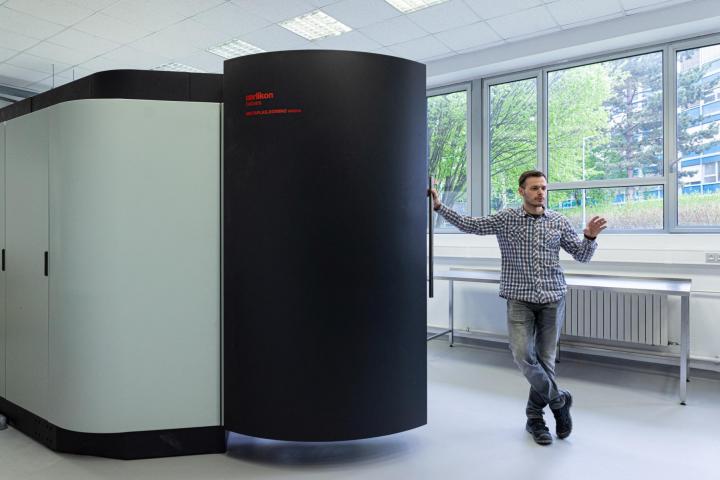
The new laboratory of the Group of Advanced Materials is located in the building of the Faculty of Electrical Engineering, FEE CTU in Prague 6 - Dejvice, and its test operation is opening these days. The laboratory equipment includes two coating devices, a 3D optical interferometric profilometer for measuring the thickness of coatings and their internal stress, and equipment for adhesion analysis. It is for the research of special material coatings with a thickness of typically 1-5 micrometers that the group of prof. Polcara has been focusing for a long time and has already completed several Czech and international projects supported by prestigious grants. The Prague laboratory will now focus primarily on solutions that can be brought into production as quickly as possible.
High-performance pulsed magnetron sputtering as a game changer
The dominant feature of the new laboratory is a unique medium-sized coating equipment designed for industrial applications. The device is equipped with four cathodes, from which the desired material is sprayed. The uniqueness lies in the fact that each cathode is powered by its own high-power pulse source HiPIMS (High-Power Impulse Magnetron Sputtering). The power in the pulse is up to one megawatt, which creates a highly ionized plasma promising completely new properties of the prepared coatings. Compared to standard technologies, coatings prepared by the HIPIMS method have a higher density, and thus corrosion resistance or higher hardness. At the same time, this method makes it possible to coat complicated shapes or holes, which is still one of the limitations of existing deposition techniques. Experts are now preparing coatings from non-ferrous alloys (so-called High Entropy Alloys), ceramic layers or friction-reducing layers.
The vacuum chamber has a volume of 470 liters, which is sufficient, for example, to coat up to 1000 drills during a single deposition or one large mold for the automotive industry. Due to the size of the apparatus, it is possible to combine the development of layers with their direct application to real components supplied by industrial partners. This will significantly speed up the path of new coatings to the market.
Objective: durable solutions suitable for series production
"Academic research often focuses on improving one property, such as hardness, but ignores other parameters that are often more important. Our main goal is to provide the industry with a comprehensive solution, ”says Dan Karpinski of the Advanced Materials Group. The new laboratory and the possibility of development in industrial conditions is thus very attractive for companies that want to apply or improve coatings. Interest in the equipment from companies is already high. As an EU coordinator, prof. Polcar recently won the Lubricoat project worth CZK 52 million, which is fully based on the possibilities of the new laboratory and where German and Spanish industrial partners will contribute in excess of CZK 17 million.
